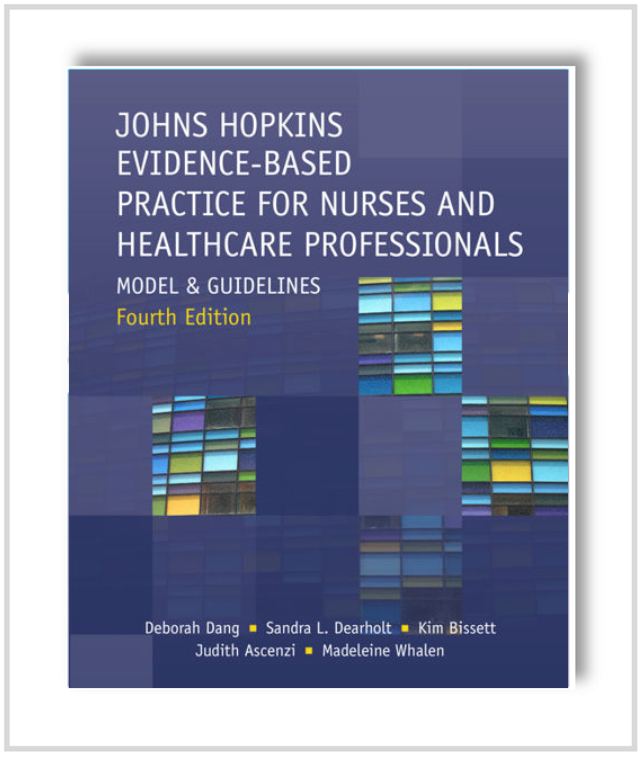
If you need help using library resources or need assistance finding information, contact the library!
Call (309) 677-3502*
Send us an Email : reference@bradley.edu
Check our Frequently Asked Questions.
*During research help hours
 Welcome to this guide to help you use the Johns Hopkins Evidence-Based Practice Model.
Welcome to this guide to help you use the Johns Hopkins Evidence-Based Practice Model.
Bradley University's nursing graduate programs use the Johns Hopkins Evidence-Based Practice (JHEBP) Model.
Use Johns Hopkins Evidence-Based Practice for Nurses and Health Care Professionals (2022) to guide you in seeking the best evidence, its implementation, and adoption into practice.
Sackett et al. (1996) defined evidence-based practice (EBP) as "the conscientious, explicit and judicious use of current best evidence in making decisions about the care of the individual patient" (p. 71). Even though the phrase ‘evidence-based practice’ did not exist when Florence Nightingale wrote Notes on Nursing: What it is and What it is Not, her theory certainly fits the framework of EBP (McMenamin et al., 2019).
McMenamin, A., Sun, C., Prufeta, P., & Raso, R. (2019). The evolution of evidence-based practice. Nursing Management, 50(9), 14–19. https://doi.org/10.1097/01.NUMA.0000579000.09987.b0
Sackett, D. L., Rosenberg, W. M., Gray, J. A., Haynes, R. B., & Richardson, W. S. (1996). Evidence-based medicine: What it is and what it isn’t. BMJ : British Medical Journal, 312(7023), 71–72. https://doi.org/10.1136/bmj.312.7023.71
The JHEBP model emphasizes the PET (Practice, Evidence, and Translation) Process. (available as Appendix A in the Johns Hopkins Evidence-Based Practice for Nurses and Health Care Professionals ebook)
Dang, D., Dearholt, S., Bissett, K., Ascenzi, J., & Whalen, M. (2022). Johns Hopkins evidence-based practice for nurses and healthcare professionals: Model and guidelines. 4th ed. Sigma Theta Tau International
The infographic is labeled Work in Interprofessional Teams. A box is labeled Inquiry. An arrow leads from the Inquiry box to the PET section. The PET section consists of three pointed boxes labeled Practice Question, Evidence, and Translation. The three pointed boxes are surrounded by circular arrows moving between Learning, Reflection, Practice, and Learning. An arrow leads from the PET section to a box labeled Best Practices. An arrow from Best Practices leads to Practice Improvements. Arrows from both the PET section and the Practice Improvements box lead back to the Inquiry box.